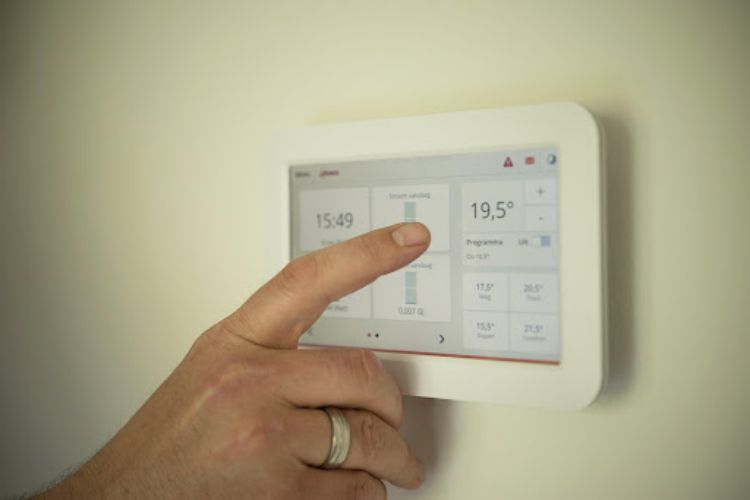 Image by Rudy and Peter Skitterians from Pixabay
Image by Rudy and Peter Skitterians from Pixabay
Although modern heating systems are often highly sophisticated and reliable, problems are bound to arise at some point. The presence of these issues can hamper your loved ones’ comfort, as well as their safety.
How would you feel if your heater quit altogether during the middle of the winter, leaving you and your family shivering in the cold? It would not be very good.
Fortunately, there are ways to minimize the chances of your heater stopping working. Even if the unexpected occurs, you can always take action to resolve the issue. This article discusses the top reasons why heaters stop working, along with what to do when that happens.
Poor maintenance
In the winter, lack of furnace maintenance may be the leading cause of homeowners calling HVAC technicians. When your furnace doesn’t start, it’s usually because it hasn’t been tuned for a while. Most of the time, it’s simply because the system is dirty.
Having a dirty blower can cause equipment failure on your furnace. The system’s heat exchanger can’t work without enough air moving across it to prevent overheating. An unclean blower can force the heat exchanger to fail.
Your heater may also have stopped working because of dirty air filters. These filters can restrict the flow of air and exacerbate problems caused by incorrect duct sizing. It’s crucial, therefore, to change filters every three months or so.
Dead blower capacitor
Another reason might be the blower capacitor. There’s a tolerance level for every capacitor. A blower may not achieve the correct RPM if the tolerance level is below a certain level.
The blower can sometimes not start if the capacitor is dead or dying. To fix this, replace the capacitor.
Low refrigerant levels
When you use a heat pump to heat your home, the refrigerant level of the pump can become low. Due to this excessive use of heat strips, utility bills go high.
Over an extended period, low refrigerant levels could lead to compressor overheating and failure. Thus, if your heat strips are turning on too often, it’s necessary to increase the refrigerant charge.
How to know when to replace the furnace
In ideal circumstances, you wouldn’t want to wait until your furnace is entirely dead to replace it. You could easily lose your heat in the middle of winter as a result of this. Consider both the efficiency and the cost of your furnace’s operation instead.
The following signs may indicate that a replacement is needed.
- Repairs to the furnace become more expensive over time
- There’s a buzzing or rattling sound coming from the furnace
- It emits dust, soot, or rust, especially around the register
- There’s more frequent switching on and off of the furnace
- There’s a crack in the heat exchanger
- Despite not using it as often as you used to, your heating bills have gone through the roof
- Some rooms in your house are warmer than others due to uneven heating
- There are rust, corrosion, or cracks around the furnace
- There’s an increase in humidity in your home
It may only be necessary to perform maintenance or repair when some of these warning signs occur. The more often they occur near the end of the appliance’s life, the more likely it’s time to replace the furnace.
How to fix a malfunctioning furnace
Check the circuit breaker
Ensure your furnace is set to the heat mode on your thermostat if it doesn’t turn on. Afterward, raise the temperature by a few degrees above your home’s temperature. If this happens, the circuit breaker has likely tripped or blown.
Find the circuit breaker panel and locate the furnace circuit. Most likely, a circuit breaker has tripped and toggled the circuit to the middle position. To reset your furnace’s breaker, turn the switch to the OFF position and flip it back to the ON position.
Clean the burners
The dirty burners of a gas furnace present another common problem. During the winter, your heating system will struggle to supply heat to your home because dirt and foreign objects will accumulate in the burners. If the burners are producing yellow flames, it’s time to clean the furnace. A clean burner will produce blue flames that are warm and consistent.
With the help of a vacuum and several other tools, you can easily sanitize the burners.
Clean the flame sensor
The flame sensor needs to be cleaned to detect and monitor accurately the flames that occur during the heating process. Take out the sensor before cleaning the gas furnace. It’s important not to clean the furnace sensor while installed since it may damage the components inside. After removing the furnace sensor, you can clean it with a sponge or towel. Connect the flame sensor back and activate the furnace to complete the process.
Make sure your electric ignition and pilot control are working
In the case of thermocouple-equipped furnaces, a faulty ignition system will result in a furnace that’s much less able to heat the house effectively. Pilot lights can go out if your heating system is clogged or drafty. Newer systems don’t use standing pilot lights but instead, ignite electrically.
The first step is to turn off and back on the furnace’s power switch (the ignition may need to be reset).
To inspect the heating element, turn off the power and gas to the furnace. You’ll need to replace the igniter if the heating element looks cracked or damaged.
If the problem persists or you cannot fix the broken heating system, you can always ask for help from professionals instead of trying and wasting time and energy. Such experts will examine and provide both heating and a/c services.




